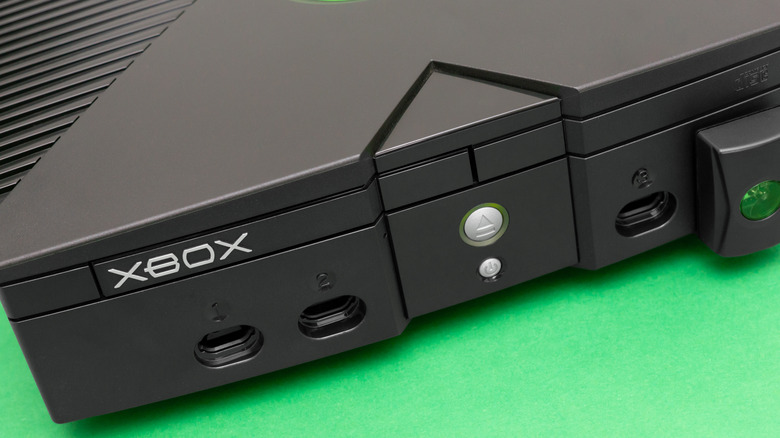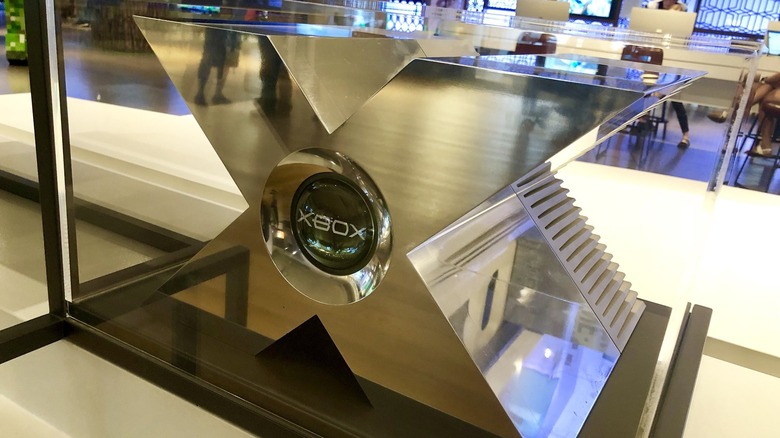The Original Xbox Prototype Had A Very Literal Design
While the Xbox has gone through some stunning transformations since its creation, its naming conventions have not been as straightforward as its competitors. The PlayStation uses a simple numbering system that makes it obvious which machine is the latest iteration, while Nintendo has presented some descriptive and intuitive product names: DS is short for "Dual Screen" (per Nintendo) and the Switch got its name because it can "switch" between a handheld and home console (via Nintendo Everything).
The Xbox family has had much less success in following any sort of consistent logic. The original Xbox might have had a very simple namesake — "xbox" being the email shorthand for "DirectX Box," one of the console's early nicknames according to designer Seamus Blackley (via The Verge) — but the simplicity ends there. From the Xbox 360 and Xbox One to the Xbox Series X|S — which caused an uproar on its own — none of the names say much about their respective consoles nor their relative order of release. A quick search on the internet will turn up threads like this one on Reddit asking why the names are so terrible, and it's something of a running joke in the industry at this point, as documented by GamesRadar+.
It's somewhat ironic, then, that the original Xbox prototype might be the most descriptive and literal console design in existence. Revealed by Bill Gates at the 2000 Game Developers Conference (GDC) keynote, the early Xbox was a shiny metal box shaped like an "X."
The Xbox prototype was enormous and expensive to make
Before it was a solid console with genre-defining exclusives like "Halo," as well as a ton of hidden gems, the original Xbox was apparently a massive machine. According to a tweet from Xbox EMEA social marketing manager Graeme Boyd, the shiny showcase unit is housed in the Microsoft Visitor Center. A video uploaded by Xbox Games marketing VP Aaron Greenberg shows the prototype to be wider along both horizontal dimensions than it is tall— not exactly a home-friendly console, especially in comparison to its much smaller (though still sizable) final version.
Replying to Boyd, Seamus Blackley revealed that there were actually several copies of the prototype that were "lugged" around the world for showcases, each of them a fully functional unit. The book "Opening the Xbox" by Dean Takahashi (via Eurogamer) explains that every individual X-case was hewn from aluminum and cost 18 thousand dollars to make — a rather hefty amount to pay for a straightforward visual gag.
It seems that the showy commitment to the "X" branding may have paid off. The rather underrated original Xbox marked the beginning of a lasting console brand that has weathered many ups and downs (per Protocol), and one of the prototype units remains on display at the Microsoft Visitor Center in Redmond, WA.


